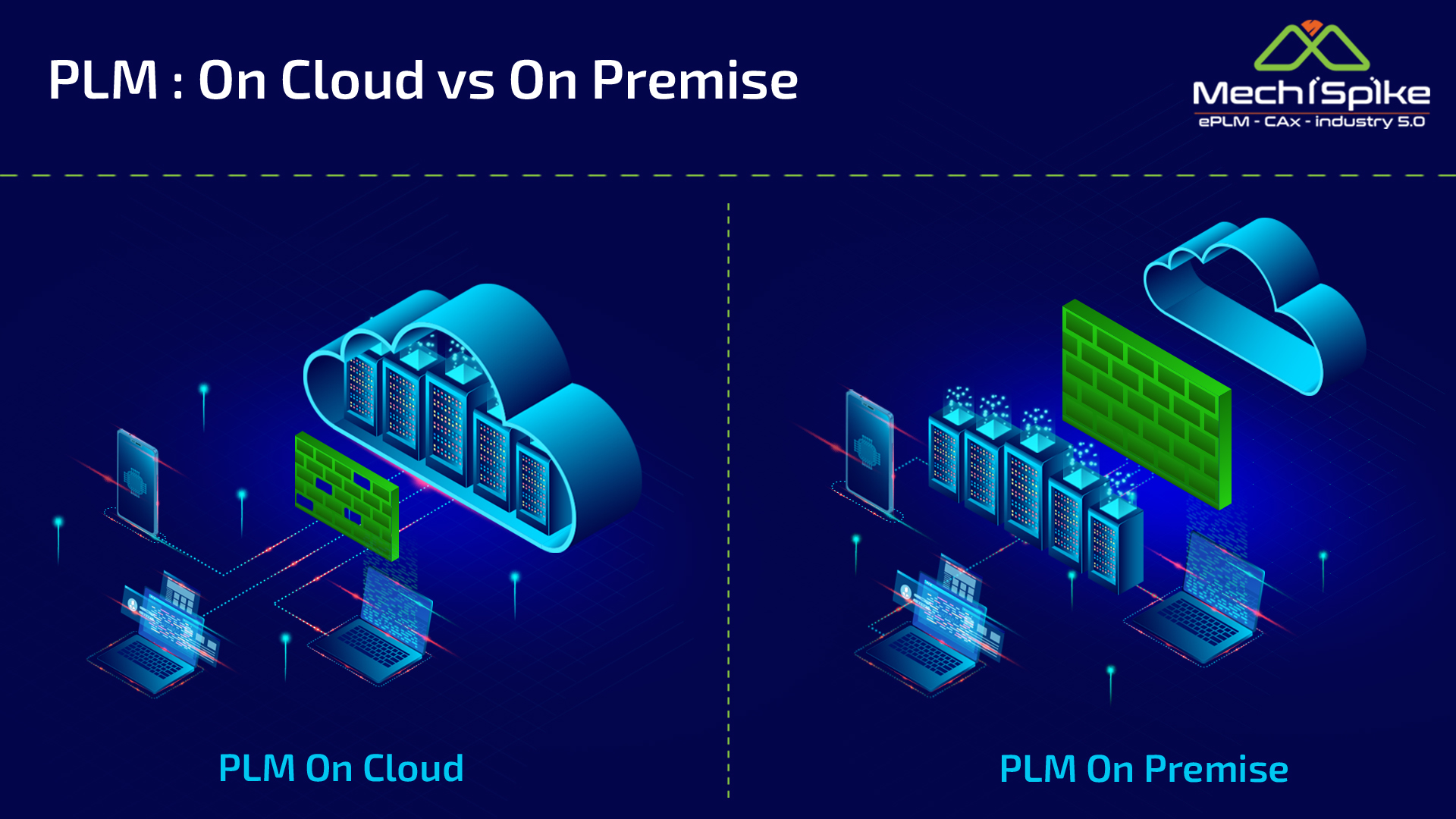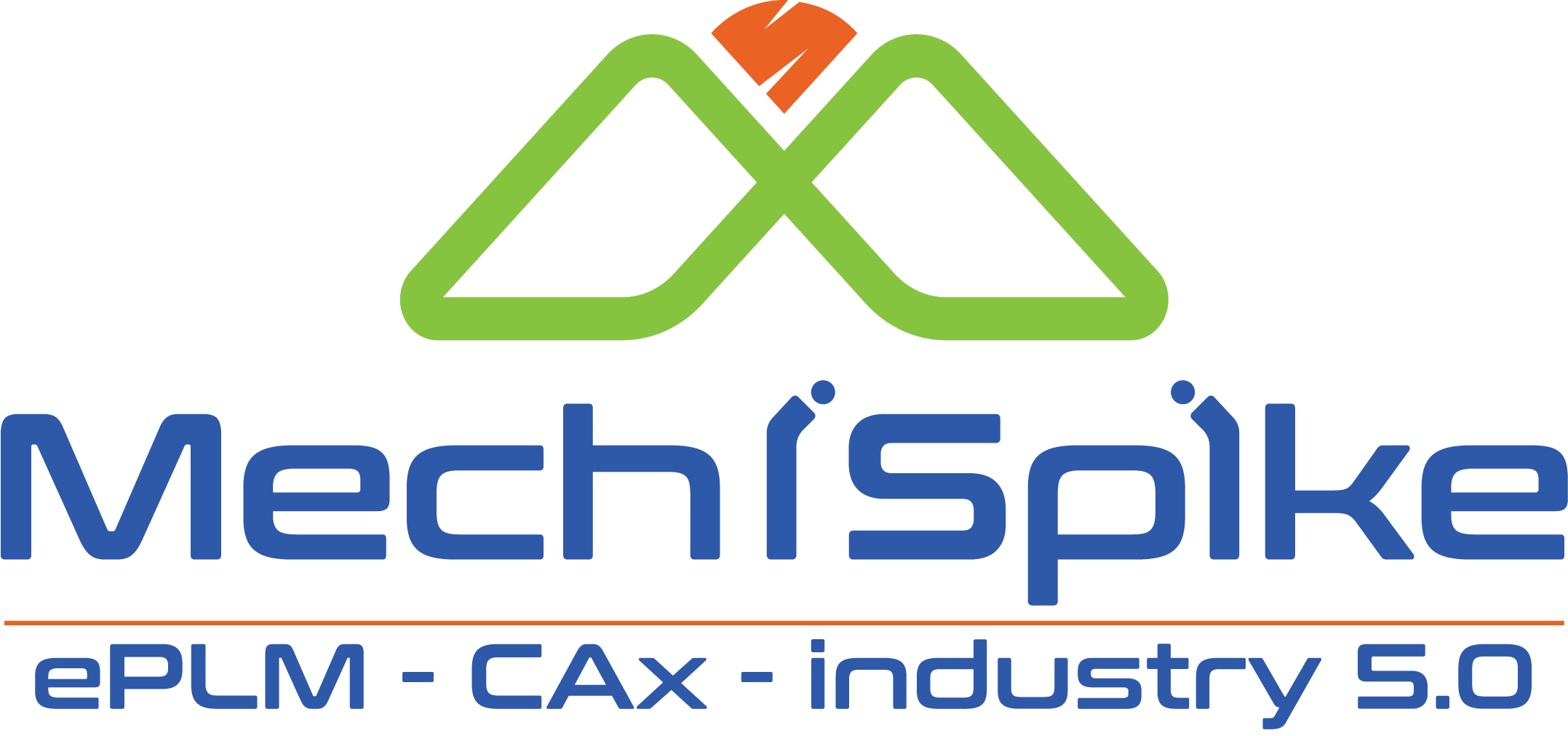
PLM : On Cloud vs On Premise
In this edition, let us take a look at the evolution of Technology Landscape which is directly affecting all the businesses, and of course the PLM World.
As companies are outsourcing more their teams are increasing in sizes and almost always are dispersed at different locations. This is making all PLM Business Leaders think and ask this question to themselves : PLM : On Cloud vs On Premise?
In the ever-evolving landscape of product lifecycle management (PLM), businesses are faced with the decision of adopting either on-premise or cloud-based solutions to manage their product development processes.
This shift from on-premise to on-cloud PLM is a result of the growing need for flexibility, scalability, and accessibility in the modern business environment.
In this article, we will explore the reasons behind this shift, delve into the overall business pros and cons of PLM on Cloud, and compare it with the traditional on-premise model.
Why the Shift from On-Premise to On-Cloud PLM?
The shift from on-premise to on-cloud PLM is driven by several factors that align with the dynamic needs of businesses today.
Traditional on-premise PLM systems often require significant upfront investments in hardware, software, and maintenance. These systems can be complex to manage, and updates or upgrades may involve downtime and disruptions to regular operations.
On the contrary, cloud-based PLM solutions offer a more agile and cost-effective approach. They provide the flexibility to scale resources as needed, reducing the burden of maintaining and upgrading infrastructure. Cloud PLM also facilitates remote access, enabling collaboration among geographically dispersed teams, a crucial aspect in today’s globalized business environment.
As organizations increasingly prioritize agility and efficiency, the move to PLM on the cloud becomes a logical choice.
Pros and Cons of PLM on Cloud:
Pros:
- Cost-Effective Scalability:
Cloud-based PLM solutions allow businesses to scale their infrastructure resources based on demand. This pay-as-you-go model eliminates the need for large upfront investments, making it a more cost-effective option for businesses of all sizes.
- Accessibility and Collaboration:
With PLM on the cloud, teams can access and collaborate on product data from anywhere with an internet connection. This level of accessibility fosters real-time collaboration, improving communication and speeding up decision-making processes.
- Automatic Updates and Maintenance with no Infrastructure Upgradation Cost:
Cloud PLM providers handle updates and maintenance tasks, ensuring that businesses always have access to the latest features and security patches without disrupting daily operations.
- Global Reach:
Cloud-based PLM enables organizations to collaborate seamlessly with partners, suppliers, and customers on a global scale. This facilitates a more streamlined and efficient product development process, enhancing overall productivity.
Cons:
- Security Concerns:
Although cloud providers invest heavily in security measures, concerns about the safety of sensitive product data persist. Companies operating in highly regulated industries may face challenges in meeting compliance standards with cloud-based solutions.
- Customization Limitations:
Cloud PLM solutions may have limitations regarding customization options compared to on-premise systems. Some businesses with highly specialized or unique processes may find it challenging to adapt a cloud-based PLM to their specific needs.
- Data Transfer and Migration:
Moving large volumes of data to the cloud can be time-consuming and may require careful planning to avoid disruptions to regular business operations. Legacy data migration can be particularly challenging for large enterprises with extensive historical records.
- Dependency on Internet Connection:
The primary drawback of PLM on the cloud is the reliance on a stable internet connection. In areas with limited connectivity, users may experience latency issues, potentially impacting the efficiency of collaboration and data access.
Comparison with PLM On-Premise:
PLM On-Premise:
- Control and Customization:
On-premise PLM solutions provide businesses with greater control over their infrastructure and allow for extensive customization. This can be advantageous for companies with complex workflows or specific industry requirements.
- Data Security:
With on-premise PLM, companies have direct control over their data, potentially offering a higher level of security and compliance, which can be crucial for organizations in highly regulated industries.
- Internet Independence:
On-premise PLM does not rely on internet connectivity, making it suitable for environments where stable internet access may be a challenge.
- Higher Upfront Costs:
One of the significant drawbacks of on-premise PLM is the substantial upfront investment required for hardware, software, and ongoing maintenance. This cost can be a barrier for smaller businesses or startups.
PLM On Cloud vs On Premise:
- Cost:
Cloud PLM’s pay-as-you-go model often translates to lower initial costs, making it more accessible for businesses of all sizes. On-premise solutions, in contrast, require significant upfront investments.
- Scalability:
Cloud-based PLM easily scales with the growth of a business, providing flexibility and cost-effectiveness. On-premise solutions may struggle to adapt to changing resource needs, potentially leading to inefficiencies and increased costs.
- Accessibility and Collaboration:
Cloud PLM excels in providing accessibility and promoting collaboration among teams spread across different locations. On-premise solutions may face challenges in facilitating seamless collaboration for remote or global teams.
- Data Security:
While cloud providers invest heavily in security measures, on-premise PLM offers direct control over data security. This can be crucial for industries with stringent compliance requirements.
- Infrastructure Upgrade :
Cloud PLM providers handle updates and maintenance tasks, ensuring that businesses always have access to the latest infrastructure, features and security patches without disrupting daily operations. On Premise PLM needs investments in infrastructure upgrades increasing the cost substantially.
Potential for Improved Security in Cloud-Based PLM:
Cloud providers are continually investing in enhancing security measures to address concerns associated with data safety.
As technology evolves, advancements such as encryption, multi-factor authentication, and sophisticated monitoring tools contribute to strengthening the security posture of cloud-based PLM solutions. As a result, the potential for improved security in the future may mitigate some of the apprehensions businesses have about migrating sensitive product data to the cloud.
Challenges of Legacy Data Migration for Large Enterprises:
One of the most significant challenges in transitioning from on-premise to cloud-based PLM is the migration of legacy data.
Large enterprises with extensive historical records face the complex task of transferring massive volumes of data to the cloud without disrupting ongoing operations.
This process requires careful planning, robust data migration strategies, and may involve temporary coexistence of on-premise and cloud solutions during the transition period.
Despite the challenges, the benefits of improved collaboration, scalability, and cost-effectiveness often outweigh the hurdles of legacy data migration.
For smaller enterprises with little or no legacy data, PLM on the cloud emerges as a more straightforward and advantageous option from the start.
Conclusion:
The comparison between PLM on Cloud and On Premise underscores the shifting landscape of product lifecycle management in response to the evolving needs of modern businesses.
While on-premise solutions offer control and customization, cloud-based PLM solutions provide cost-effective scalability, accessibility, and collaboration. The ongoing advancements in cloud security and the potential for improved data protection make the cloud an increasingly attractive option.
For large enterprises, the challenges of legacy data migration should not overshadow the long-term benefits of adopting cloud-based PLM.
The advantages of improved efficiency, global collaboration, and lower operational costs position PLM on the cloud as a strategic choice for businesses looking to stay competitive in today’s fast-paced and interconnected world.
On the other hand, smaller enterprises with no or minimal legacy data find PLM on the cloud as an immediately accessible and advantageous solution, aligning well with their dynamic operational requirements.
As the PLM landscape continues to evolve, the choice between on-premise and on-cloud solutions will ultimately depend on the unique needs, priorities, and constraints of each business.
MechiSpike can be of GREAT help to you here with our Consulting or Integration Services for your business.
___
With MechiSpike, you can leverage your PLM to the fullest.
Subscribe Now to get this Weekly Newsletter delivered in your Inbox directly :
Our mission : To equip you with the knowledge and tools you need to drive value, streamline operations, and maximize return on investment from your PLM initiatives.
Over the coming weeks and months, PLM ROI Newsletter will guide you through a comprehensive roadmap to help you unlock the full potential of your PLM investment.
We are committed to be your trusted source of knowledge and support throughout your PLM journey. Our team of experts and thought leaders will bring you actionable insights, best practices, case studies, and the latest trends in PLM.
Subscribe Now to get this weekly series delivered into your Inbox directly, as and when we publish it.
To your PLM success!
Warm regards,
Chandu Namuduri
Visit Us: www.mechispike.com
If you want to Grow your PLM Career to the Fullest, Click Here to explore our Job Openings.For PLM Services : Click Here to Schedule a Call with us.


